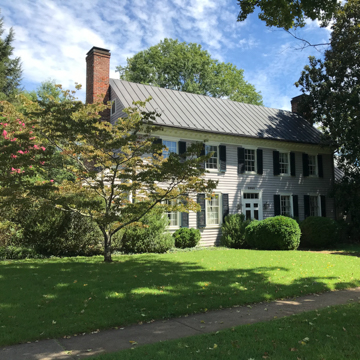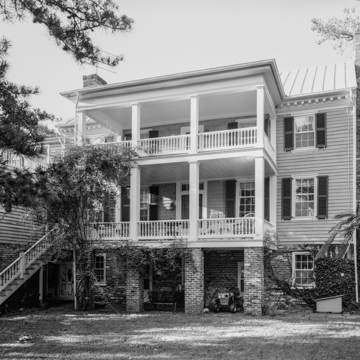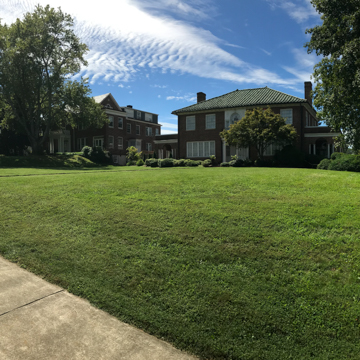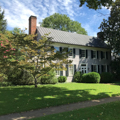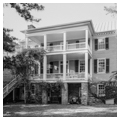Peakland Place, originally called Catalpa Drive, was platted as a streetcar suburb branching off the northwestern end of Rivermont Avenue. Though several houses were built prior to World War I, major growth occurred from the 1920s. In 1938 the streetcar tracks that centered the gently winding street were removed and replaced with a landscaped parkway. As with many such neighborhoods, the cumulative ambiance of conservative well-being that characterized American domestic design between the two world wars counts for more than the merit of particular houses. No matter their individual stylistic idiosyncracies, most of the expansive period houses disclose more similarities than differences in terms of scale, materials, broad facades, side porches, and landscaping. The Bishop John Early House at 3890 Peakland was built prior to 1816 and was moved from Court Street in 1931–1932. A frame version of the city's typical Federal brick houses, it fits well in its present location, a testament both to its own merit and to the traditional, conservative architecture of its newer neighbors.
You are here
Peakland Place Houses
If SAH Archipedia has been useful to you, please consider supporting it.
SAH Archipedia tells the story of the United States through its buildings, landscapes, and cities. This freely available resource empowers the public with authoritative knowledge that deepens their understanding and appreciation of the built environment. But the Society of Architectural Historians, which created SAH Archipedia with University of Virginia Press, needs your support to maintain the high-caliber research, writing, photography, cartography, editing, design, and programming that make SAH Archipedia a trusted online resource available to all who value the history of place, heritage tourism, and learning.














